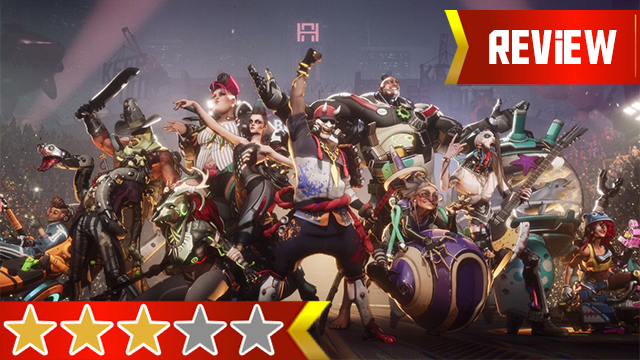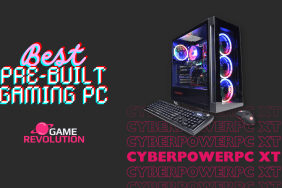Few studios are as singular and widespread as Ninja Theory. While it mainly produces experiences in the character action genre, those hack and slash games cover a variety of tones and series. BLEEDING EDGE is the team’s foray into multiplayer, bringing its stylistic flair and melee fundamentals to the online space. Some of those qualities carry over, but end up getting overwritten by the game’s questionable design.
Bleeding Edge Review | Characters with character
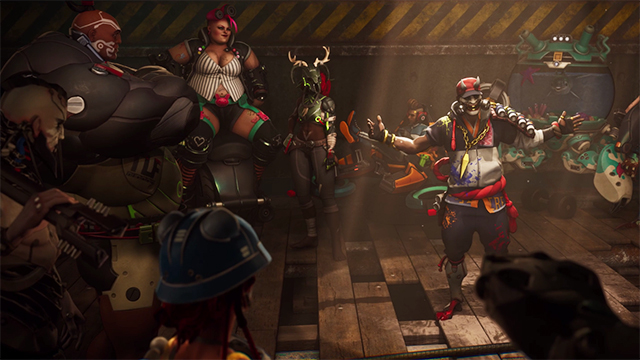
But Bleeding Edge makes a solid impression before it gets to disappoint you with its gameplay. Even though it only launched with 11 characters (more are on the way), they are each designed with the type of personality and creative flair that’s not too far off from what Blizzard achieved with Overwatch. El Bastardo and ZeroCool might be a little on the lame side, especially given the latter’s proneness to spew cringeworthy Gamer Speak™, but the rest are inventive mashups of original ideas that give the game its signature look. These eclectic oddballs range from graffiti artist hacker ninja from Hell’s Kitchen, a corpse attached to a robotic British snake, and a giant Kiwi that rolls up into a ball and sounds and acts a lot like Taika Waititi’s Korg from Thor: Ragnarok. Few other games have a lineup half as bizarre or visually appealing.
ALSO: How Bleeding Edge’s dolphin in a mech, Mekko, came to be
In addition to the upbeat soundtrack, the stylized art direction matches their personalities as well since they mostly stretch the limits of reality in order to create a more interesting design. This extends to the animation and all the little details that give each character life. It’s a kind of cohesive design that works so well visually that it invites you to want to play as them.
However, playing is where the game begins to reveal that its art style is a big, lovely poster trying to cover an even bigger mechanical hole. Every character is outfitted with a small handful of abilities that are easy to understand, especially given the helpful tutorial and brief descriptions in the menu. The depth comes from when and where to use those few powers in the best way to help your four-person team.
Conceptually, that works well for teams that are communicating as you can coordinate these moves and have the biggest effect. It’s rather annoying to get peppered with ranged shots you can’t always avoid and fall into endless juggles, but hacking away and using the special moves controls well and shows glimpses of Ninja Theory’s action game expertise. Along with having proper sound cues and UI markers, the moves are flamboyant enough to understand what is happening most of the time, which is important in a multiplayer setting.
Bleeding Edge Review | None for all, all for none
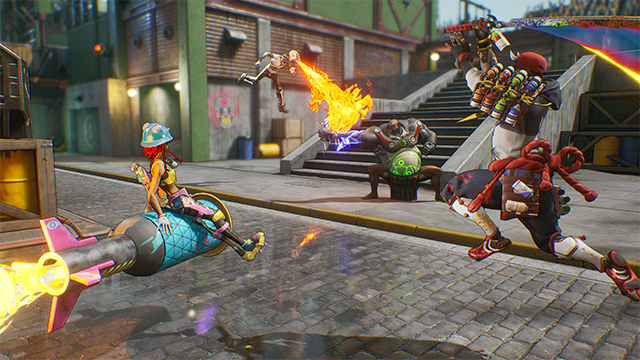
The smooth controls and simple ability pool just don’t work as well in practice most of the time because of the design’s overwhelming inability to enable and focus on its strengths. The game works best when played as a team yet multiple aspects of Bleeding Edge don’t reign players in to see the game at its best.
For one, there is no role queue. While it may seem restrictive, it forces players to create a well-balanced team and cuts down on cheesy compositions. Giving players the freedom to choose the damage class will mean they will choose the damage class more often, especially since there are currently more damage heroes in the game (five as opposed to three for the other two classes). You can’t force teamwork, but you can at least heavily guide groups to compositions that better foster working together.
ALSO: Overwatch Role Queue might be the best thing to happen to the game in years
Fewer healers, which is an unfortunate byproduct of an excess of damage dealers, means that it’s harder to actually heal a whole team since healing three other people puts too much stress on that sole support character. Many of the healers often have relatively weak healing capabilities as well and the game doesn’t meaningfully acknowledge assists or heals, making that vital class even more unappealing.
Healing people is generally pretty difficult anyway because of the map and objective design that fail to keep teams together. Maps are pretty open, lacking the sort of lanes and design that focuses players in one spot or through specific pathways. Objectives also have more than a single hotspot, meaning players can pick what area they want to attack.
Since maps don’t funnel players to specific areas and objectives usually have more than one active area, it’s inevitable that most teams will splinter off. And when teams splinter off, they’re no longer teams; they’re just individuals getting slaughtered by an enemy with slightly better coordination. Bleeding Edge thrives on the rush of groups executing a decent plan and also dies when very few of its elements facilitate those sorts of moments.
Team play can pop up organically and it becomes a more interesting multiplayer experience the few times it does occur. But that doesn’t happen a lot of the time, given the nature of online randos that love to just run around and score kills. Players might mature as the game grows and work together more often, but it’s less naive (and probably better) to wish for updates that bake this synergistic mentality into the game’s core.
It’s too easy to compare it to Overwatch, but it’s also impossible to ignore how that experience is designed to require teams to work together and see the game at its best. Teams have to at least pick certain roles that are best for the team and not just whatever they want. Maps often have distinct lanes that funnel players to certain places. And the objectives at the end of these places are singular in nature, meaning players will at least accidentally meet up at one location. Overwatch is a different game from a larger, more experienced team, but it points out the many holes in Bleeding Edge’s design that cripple it at every turn.
Bleeding Edge Review | Fair but unappealing cosmetics
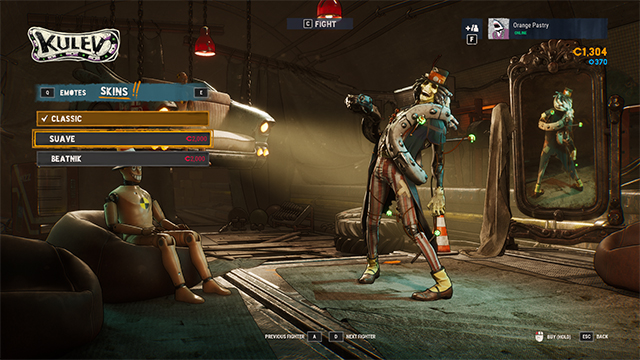
Cosmetics aren’t a crucial part of multiplayer games, yet, when done well, they provide a meta layer that can hook players. Bleeding Edge has boards, emotes, stickers, board trails, skins, and passive perk-like chips to earn and thankfully doesn’t hide this gear behind loot boxes or FOMO. It’ll take a while to unlock everything as a lot of it is quite expensive, but you can do it without feeling like Microsoft exploiting your addictive tendencies.
While it isn’t full of greedy systems, the cosmetics themselves aren’t too appealing and aren’t worth the currency. Boards, board trails, stickers, and emotes are fine to have but, like most other games, are just meant to play second fiddle to the skins. But the skins here are strangely underwhelming as they’re all mere recolors of the default one. Outside of the pre-order and Game Pass punk set, they fail to exhibit any imagination or be costumes worth chasing. Having only two skins is only part of the problem; they’re just not the most appealing carrots to put at the end of the stick.
Lackluster cosmetics are the least of Bleeding Edge’s problems. Ninja Theory may have succeeded in creating a cast of distinct, well-crafted characters that are full of personality, but it stumbled in making an engrossing game around that diverse roster. Fluid and easy-to-grasp abilities don’t hit their full potential because Bleeding Edge isn’t refined enough at its launch to guide players into the solid game that’s possibly hidden somewhere within its depths. The irony of its title is unfortunate, given how it is aspires to be new take on online multiplayer but is behind the curve because of its unfocused design.
GameRevolution reviewed Bleeding Edge on PC with a copy provided by the publisher.
-
Unique, expressive cast of characters.
-
Fluid controls and easily understable abilities.
-
Open maps, mission objectives, and general design are unfocused and don’t make teams play together.
-
Lack of role queue and abundance of damage heroes also makes teams unbalanced.
-
Cosmetics are fair, but a little dull.
